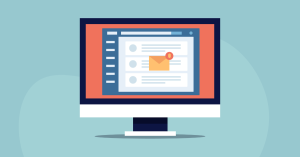An email list is a powerful thing. Email subscribers offer multiple opportunities to present your business or organization, share relevant news and information, and promote timely and engaging offers. But there’s so much more to email than regular communications.
As a retention marketing channel, email offers a more cost-effective strategy than more expensive acquisition channels like paid search. For many businesses, a well-maintained email marketing list is the mechanism that drives profitable engagement from customers acquired by those more expensive marketing strategies.
Note: If you are paying to acquire new customers via paid search or social media marketing and not currently attempting to collect email data – stop everything you are doing and start building that email list fast!
Building Your Email List the Wrong Way
Building a responsive email list is a simple job. However, there are right and wrong ways to go about it. The wrong ways might be fast – but they’ll get you into trouble even quicker. Please don’t do these things!
- Buying a list: Never buy an email marketing list. Not only will this put your organization at risk of breaching international email marketing regulations like GDPR, but it also doesn’t work. Successful email marketing is always based on the permission a subscriber has given you to contact them. You need explicit permission to send emails in order to avoid your campaigns being viewed as spam. Too many spam complaints will negatively impact your campaign deliverability and potentially result in your email marketing service provider closing your account.
- Acquiring a list: You know how this goes. Someone starts a new job and arrives in the office with a flash drive with all their old employer’s email data. This should sound multiple alarm bells. An acquired list has all the disadvantages of a purchased list—plus it demonstrates that your new employee probably can’t be trusted with your data. Have a word with them.
The Wrong Technology
Technology also plays a significant role in building a list correctly. Here are two low-tech approaches that a surprising number of businesses try before realizing they are completely unsuitable, offer a false economy, and can be downright dangerous.
- Using a spreadsheet: Compiling an email list using a spreadsheet is not only highly labor-intensive, but it also puts you at risk of breaching those all-important email marketing regulations like GDPR again. Spreadsheets have a habit of being copied and shared across your organization, meaning there is no single view of the truth. Spreadsheets also lack the mechanism to demonstrate the permission a subscriber has given you to join a list, or the ability to unsubscribe from future sends (both legal requirements).
- Using Outlook or Gmail: Email marketing applications like Outlook and Gmail aren’t email marketing tools. Just because you can Blind Carbon Copy (BCC) multiple email addresses into an email send doesn’t mean you should. Using Outlook or Gmail to manage your email marketing strategy has all the disadvantages of using a spreadsheet to manage your lists and similar risks.
The Right Technology
OK, let’s put those email marketing worst practices behind us and focus on how to grow your list correctly. This starts with selecting the right technology. Marketing automation technology like the emfluence Marketing Platform gives you all the tools you need to build and maintain laser-focused and legally compliant email marketing lists. It also helps marketers create and send highly sophisticated email campaigns that deliver the right content to the right person at the right time. With the right email marketing technology in place, you can start exploring the following strategies:
8 Strategies to Building Your Email List the Right Way
1. Create Compelling Incentives
- Build Lead Magnets: Offer valuable resources like eBooks, whitepapers, templates, checklists, or exclusive content in exchange for email addresses.
- Create Discounts and Offers: Provide discounts or special promotions for new sign-ups.
- Run Contests and Giveaways: Host contests or giveaways that require email sign-up to participate.
2. Optimize Your Website
- Add Prominent Sign-up Forms: Place sign-up forms in visible locations such as the homepage, blog sidebar, footer, and at the end of articles.
- Consider Modals: A modal is a pop-up overlay that appears on top of the main content to capture user attention, offering benefits such as higher conversion rates, improved user engagement, and the ability to effectively gather email subscriptions without redirecting users away from the main content.
3. Leverage Social Media
- Promote Lead Magnets: Share your lead magnets and sign-up offers on social media platforms.
- Utilize Ads: Run targeted social media ads to promote your sign-up incentives.
4. Run Paid Ads
- Google Ads: Use Google Ads to drive traffic to a landing page with a sign-up form.
- Social Media Ads: Use ads on Facebook, Instagram, LinkedIn, Twitter, and TikTok to target specific audiences with sign-up offers.
5. Collaborate with Influencers and Partners
- Influencer Marketing: Partner with industry influencers to promote your email list.
- Guest Posts: Write guest posts for popular blogs in your niche, including links to your sign-up form.
- Webinars and Events: Co-host webinars or events with partners, collecting email addresses from attendees.
6. Leverage Existing Traffic
- Publish More Blog Content: Create high-quality, SEO-optimized content to attract organic traffic, incorporating calls to action (CTAs) for sign-ups.
- Offer Value-added Content: In exchange for email addresses, provide additional valuable content (content upgrades) in your blog posts.
- Retargeting: Use retargeting ads to encourage previous visitors to sign up.
7. Optimize Email Collection Points
- Landing Pages: Develop dedicated landing pages with solid CTAs for email sign-ups.
- Quizzes and Surveys: Use interactive content like quizzes or surveys to collect email addresses.
- Mobile Optimization: Ensure all sign-up forms are mobile-friendly.
8. Use Networking Opportunities
- Industry Events: Collect email addresses at trade shows, conferences, and networking events.
- Business Cards: Include a QR code on your business card that links to your sign-up form.
Download our list building infographic here.
How many subscribers should you collect before you send your first email?
Too many marketers wait to reach a specific number or “critical mass” of emails before sending their first campaigns. There needs to be a better approach. When a subscriber permits you to contact them by joining your email list, they are telling you they want to hear more about your products, services or opinions. Please don’t leave them hanging.
Any delay in making contact may mean they either forget about your service or are lured in by your competitors’ offers. The moral of the story is that if you are going to build your email list fast, you need to follow up in an equally timely fashion.
Learn More
Boost your email marketing efforts today by building a high-quality list—download our list building infographic for essential tips and strategies.
To learn more about how the email and marketing automation experts at emfluence can help you build your email marketing list fast and hit those subscribers while they are hot, contact us today at expert@emfluence.com.

